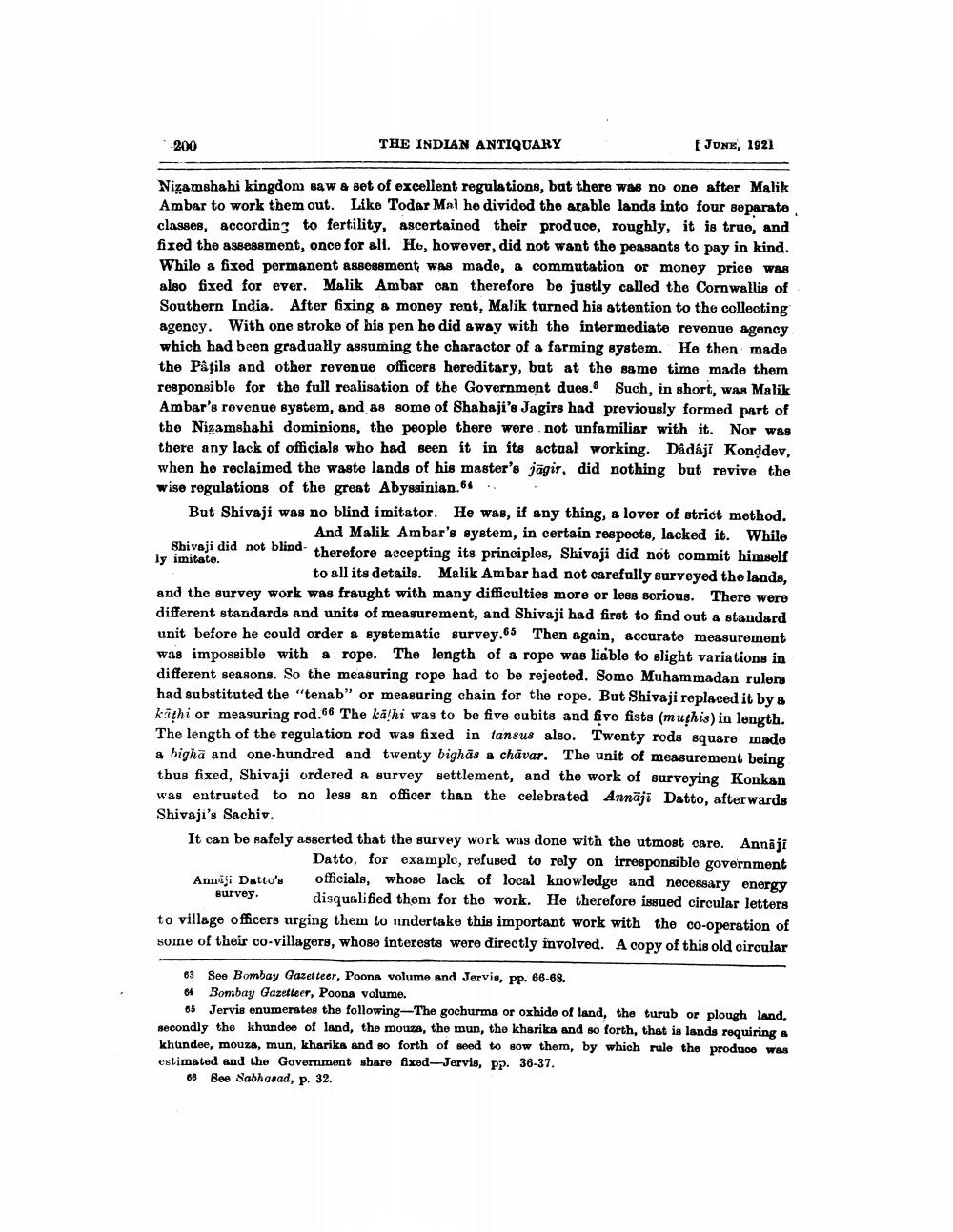________________
200
THE INDIAN ANTIQUARY
JUNE, 1921
Nizamshahi kingdom saw a set of excellent regulations, but there was no one after Malik Ambar to work them out. Like Todar Mal he divided the arable lands into four separate classes, according to fertility, ascertained their produce, roughly, it is true, and fixed the assessment, once for all. Ho, however, did not want the peasants to pay in kind. Whilo a fixed permanent assessment was made, a commutation or money price was also fixed for ever. Malik Ambar can therefore be justly called the Cornwallis of Southern India. After fixing & money rent, Malik turned his attention to the collecting agency. With one stroke of his pen he did away with the intermediate revenue agency which had been gradually assuming the charactor of a farming system. He then made the Patils and other revenue officers hereditary, but at the same time made them responsible for the full realisation of the Government dues. Such, in short, was Malik Ambar's revenue system, and as some of Shahaji's Jagirs had previously formed part of tho Nizamshahi dominions, the people there were not unfamiliar with it. Nor was there any lack of officials who had seen it in its actual working. Dådáji Konddov, when he reclaimed the waste lands of his master's jagir, did nothing but revive the wise regulations of the great Abyssinian.64 . But Shivaji was no blind imitator. He was, if any thing, a lover of strict method.
And Malik Ambar's system, in certain respects, lacked it. While Shivaji did not blind therefore accepting its principles, Shivaji did not commit himself ly imitate.
to all its details. Malik Ambar had not carefully surveyed the lands, and the survey work was fraught with many difficulties more or less serious. There were different standards and units of measurement, and Shivaji had first to find out a standard unit before he could order a systematic survey.65 Then again, accurate measurement was impossible with a rope. The length of a rope was liable to slight variations in different seasons. So the measuring rope had to be rejected. Some Muhammadan rulers had substituted the "tenab” or measuring chain for the rope. But Shivaji replaced it by a kathi or measuring rod.66 The kā'hi was to be five cubits and five fists (muthis) in length. The length of the regulation rod was fixed in tansus also. Twenty rods square made a bighā and one hundred and twenty bighas a chāvar. The unit of measurement being thus fixed, Shivaji ordered a survey settlement, and the work of surveying Konkan was entrusted to no less an officer than the celebrated Annāji Datto, afterwards Shivaji's Sachiv. It can be safely asserted that the survey work was done with the utmost care. Annäji
Datto, for example, refused to rely on irresponsible government Anniji Datto's officials, whose lack of local knowledge and necessary energy
survey. disqualified them for the work. He therefore issued circular letters to village officers urging them to undertake this important work with the co-operation of some of their co-villagers, whose interests were directly involved. A copy of this old circular
08 Soo Bombay Gazetteer, Poona volume and Jervis, pp. 66-68. 04 Bombay Gazetteer, Poona volume.
65 Jervis enumerates the following-The gochurms or oxhide of land, the turub or plough land, secondly the khundee of land, the mouza, the mun, the kharika and so forth, that is lands requiring khundee, mouza, mun, kharika and so forth of seed to sow them, by which rule the produce was estimated and the Government share fixed-Jervis, pp. 36-37.
68 See Sabhasad, p. 32.




